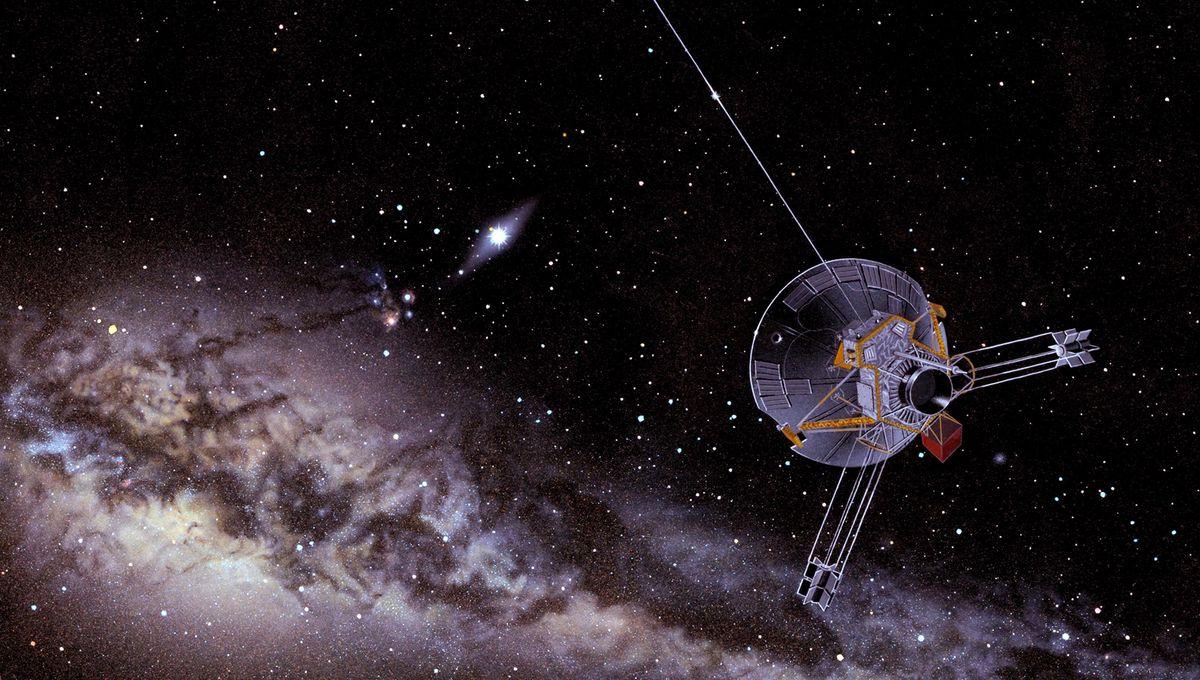-
Nieuws Feed
- EXPLORE
-
Pagina
-
Blogs
-
Forums
NASA's Voyager 1 & 2 Were Not The First Missions To Reach The Outer Solar System

NASA's Voyager 1 & 2 Were Not The First Missions To Reach The Outer Solar System
For almost 48 years, Voyager 1 and Voyager 2 have traveled across the Solar System and beyond. The missions have been pivotal in our understanding of the gas giant planets of the Solar System, and later of interstellar space, becoming the first human-made objects to enter it. However, they were not the first missions designed to travel to the outer Solar System – or even leave it.
Pioneer 10 and 11 are probably the most famous of the many Pioneer probes, a NASA program that involved many different missions from space weather satellites to lunar orbiters and planetary missions. Pioneer 12 and 13, aka Pioneer Venus Orbiter and Multiprobe, actually launched after the Voyagers in 1977. But it is Pioneer 10 and 11 that made the bigger splash in popular culture by being the first missions to image Jupiter and then Saturn, and being the first human-made objects fast enough to leave the Solar System. If that was not enough, they also experienced a weird phenomenon – later dubbed the "Pioneer anomaly" – that was so peculiar it even brought into question how gravity might work. Humanity's first close-up look at Jupiter, as seen by Pioneer 10. Image credit: NASA Pioneer 10, launched in March 1972, was the first ever mission to Jupiter. It was also the first of five artificial objects that achieved the escape velocity of the Solar System. Pioneer 11, its twin, launched in April 1973, and it was the first probe to encounter Saturn after having visited Jupiter. This one, too, had enough speed to eventually leave the Solar System. The fact that the probe could leave the Solar System had English journalist Eric Burgess thinking that they should carry a message on behalf of the people of Earth. He approached Carl Sagan about the idea, who then recruited Frank Drake (of the Drake equation fame) and Linda Salzman Sagan, his wife at the time, who prepared the artwork with contributions from Jon Lomberg. The final result, the "Pioneer plaque", is iconic. Before Voyager's famous Golden Record, Pioneer 10 and 11 carried a pictorial message that tells of the position of Solar System using the rhythmic beating of pulsars, the location of Earth in the Solar System, and a representation of the spacecraft behind, a naked man and woman, although the woman’s nudity was heavily censored, as the picture does not include a line for the labia. This made them the first space missions to carry a message with them intended for extraterrestrial beings, should they leave the Solar System. The Pioneer plaque. Yes, we sent nudes. We hope aliens are not as prudish as NASA. Image Credit: NASA Despite having launched several years before the Voyagers, the Pioneers are moving more slowly. Voyager 1 is currently the farthest spacecraft from Earth and the Sun, followed by Voyager 2, which overtook Pioneer 10 in July 2023. Pioneer 11 is fourth in the race. In millions of years, the spacecraft will pass near two stars visible to the naked eye: Aldebaran, the brightest star in Taurus, for Pioneer 10, and Lambda Aquilae for Pioneer 11. The NASA Pioneer teams continued to receive signals for years after their close encounters with the outer planets. The last signal of Pioneer 10 was received on January 23, 2003, at 12.23 billion kilometers (7.6 billion miles) away. Pioneer 11 last contacted Earth on November 4, 1995, from around 6.4 billion kilometers (4 billion miles) away. It was this long-term tracking that highlighted a peculiar effect: both spacecraft were inexplicably experiencing a deceleration as they traveled away from the Sun after they crossed the 20 astronomical units (AU) line (1 AU is the distance between Earth and the Sun) and were falling behind their expected positions. It was suspected that maybe there was something off with our understanding of gravity at large distances. No other spacecraft has experienced it apart from those two, so there was nothing wrong with the universe. The fault was with them. It turned out to be a peculiar thermal effect. The heat from the spacecraft's radioisotope thermoelectric generators and other systems onboard was found to be exerting a subtle force on them, causing a slight drag in the opposite direction of their travel. The Pioneer missions were, as their name suggests, pioneers. They influenced the Voyager probes and even New Horizons, which is the fifth spacecraft that will leave the Solar System after having visited Pluto and the Kuiper Belt object, Arrokoth. They were pivotal in the early direct studies of the gas giants and the outer Solar System. The Pioneers flew so that the Voyagers could soar. The literal Pioneers

Pioneer plaque: the first mission to take a message to aliens

Are Pioneer 10 and 11 still going?


